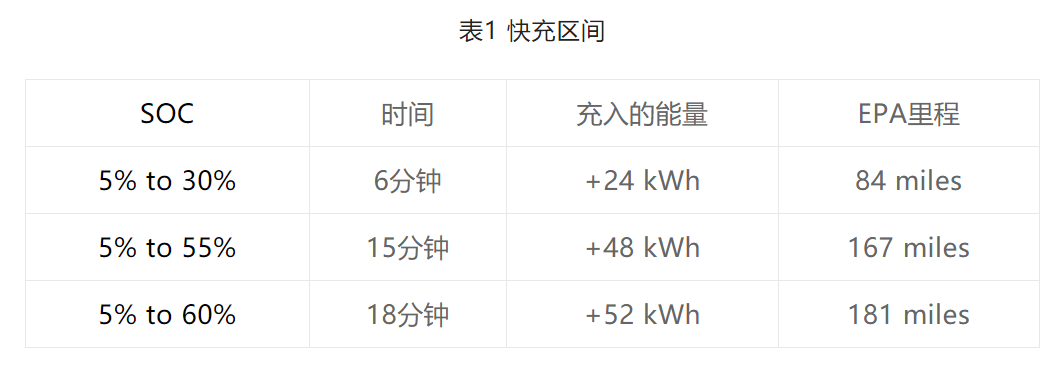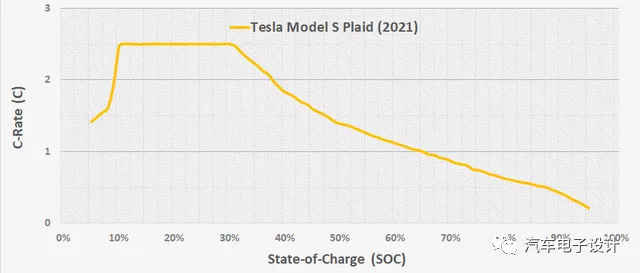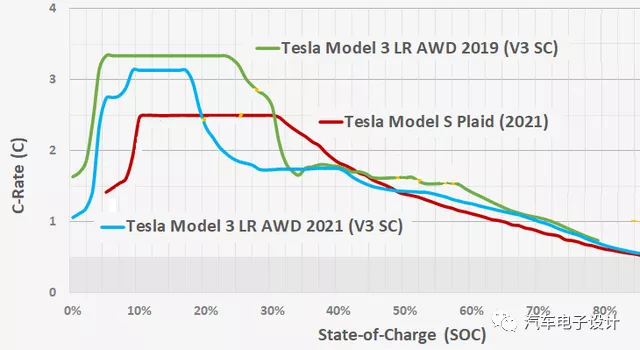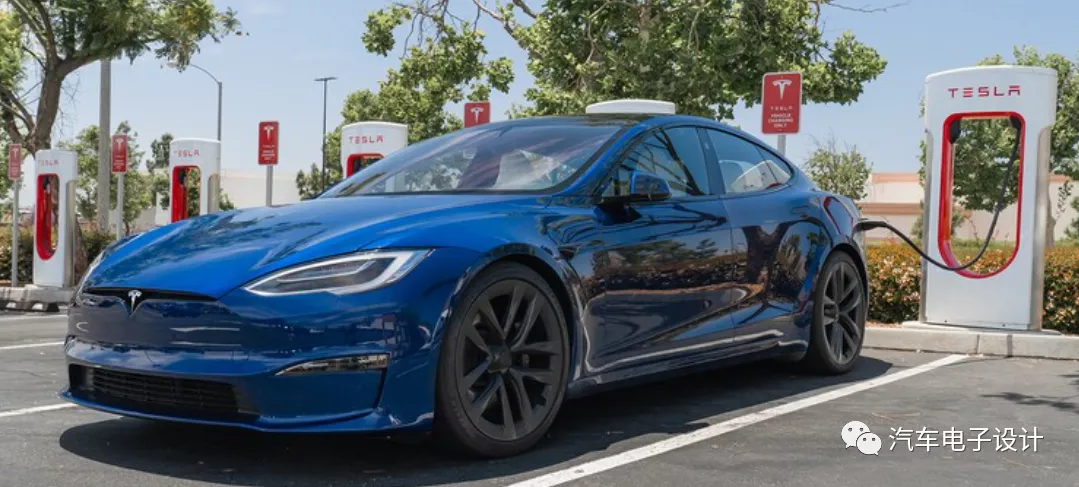Motor Trend’s Test Results for the New Tesla Model S Plaid’s Charging Power
The initial testing of the charging power for the new Tesla Model S Plaid by Motor Trend has revealed a lot of interesting conclusions to explore and ponder. Here are some basic findings:
Tesla’s current main design is based on a 400V architecture, which has developed an insane 250kW charging current (peaking near 690A). According to the logic of charging competition with the Germans, it could reach 280kW (777A), 300kW (833A), and 350kW (equivalent to staggering 970A) in phased stages.
The S Plaid currently follows Model 3’s strategy, where the continuous range of 250kW extends from the 10%-32% range. Based on current knowledge, this range could slightly expand to 40% and further slow down the speed of current decline.
The charging factor of the primary battery cell has gradually transitioned from 2C to 3C or even 4C. After the first stage of the battery energy arms competition, the next step is to focus on the technology of fast charging. Tesla has always made significant power designs under 400V, which poses a significant challenge to overall electrical design and manufacturing processes.
Test Data Provided by Motor Trend
The complete charging curve provided by Motor Trend is shown below. It takes 52 minutes to charge from 5% to 95%, but 20%-80% only takes 27 minutes (with an average power of 130kW). Here are some critical data points:
The charging power starts at 250kW from 10% and remains at this level until 32%. At 40%, it decreases to 180kW, 50% to 140kW, and 60% down to 115kW.

The corresponding times are 6 minutes for charging 24 kWh and an EPA estimated range of 84 miles for 5%-30%, and 15 minutes for charging 48 kWh and a corresponding range of 167 miles for 5%-55%. Based on the data, the fast charging power of this battery cell declines slower than the previous Model 3.
 Based on the net capacity of the battery, which is 96.7 kWh, there is room for the corresponding charging rate, currently at a peak of 2.5.
Based on the net capacity of the battery, which is 96.7 kWh, there is room for the corresponding charging rate, currently at a peak of 2.5.

From the information I have learned, combining with the practice that the peak of the Model 3 charging rate previously exceeded 3C, the main limiting factor for the charging power of the Model S Plaid is the current supply capability of the V3 charging pile. According to the electrical capacity estimation, Tesla will also raise the peak charging rate to above 3C in the future, assuming that it can be raised to 300kW at 3C and 350kW at the previous ceiling of 3.5C, which Tesla has already done according to electrical design requirements.

High Voltage Route and High Current Route

As we discussed before, there are two parts to the path leading to 350kW: increasing current and increasing voltage.
Increase current: The main restriction on the path to increase current is the heat generated by large currents. Large currents in the circuit will generate high heat loss because the resistance of all components (connectors, cables, battery connections, busbars, etc.) is inevitably heating up. Currently, it seems that Tesla has really chosen this route, which we consider irrational, and has gone all the way.
Increase voltage: The maximum current, which is generally defined as 500A in our understanding, can achieve a power of about 200kW. Switching the 400V system to 800V by increasing the voltage is an option. This is a systematic improvement for all electrical components. Currently, Kia’s approach is another route.
Summary: The logic of battery swapping is currently being promoted domestically, but I think that as more and more fast charging technologies begin to enter the practical route, the benefits of battery swapping are gradually being offset, and this route will spend too much time rather than focusing on 400V fast charging and 800V fast charging.
This article is a translation by ChatGPT of a Chinese report from 42HOW. If you have any questions about it, please email bd@42how.com.
